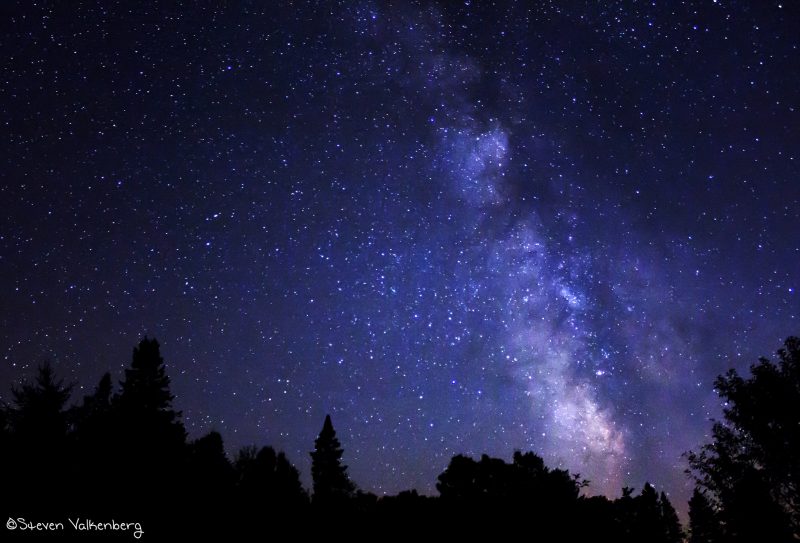
BLOG

(Photo: Steven Valkenberg / CC BY 2.0)
What We Hear Calling
Awake, listening for the future
I love talking to scientists, social entrepreneurs, fellow philanthropists—anyone wrestling with the intersection of big ideas and reality. One of my favorite questions to ask them is: What’s on your mind late at night?
Lately, the answer has been unanimous: A lot.
In retrospect, the unexpected results of November’s election seem like less of a surprise than a confirmation—we live in a time of disruption, with all the opportunity and danger that entails. Like many leaders of foundations, I believe philanthropy has a crucial role in identifying the opportunities and staving off the dangers of our age—and that we are called to do more than ever before.
As we look to a new year certain to be characterized by uncertainty and change, here are three big (connected) areas of, sometimes, nighttime preoccupation:
The Role of Science in Public Life
For 40 years we have supported pioneering biomedical scientists early in their careers, knowing that taking a risk on the work of exceptional people generally results in tremendous breakthroughs. We’ve drawn inspiration from these Scholars as we’ve developed our philanthropic work in new areas—especially in supporting experimentation and knowledge building around civic engagement.
The scientific process serves us well in our work at the Foundation, and it has an important role in society at large. While science, as part of the discovery process, gets plenty wrong, it is characterized by a fundamental imperative to question and reexamine and self-correct, driven by a deep human desire to know and to improve.
Advancing the belief that communicating science is more vital to our society than ever before, a new report from the National Academies of Sciences, Engineering and Medicine provides an important map. The Rita Allen Foundation is a lead funder of this work along with a related effort by the American Academy of Arts and Sciences to examine “the public face of science.” The National Academies report was written by a committee of scientists and science communicators who looked at a growing body of research on what makes science communication effective, or not, particularly when dealing with contentious issues. It points to the huge amount that we still don’t yet know about how to communicate science with impact, and it also highlights key findings so far.
The overall conclusion is this: effective science communication isn’t primarily about conveying information that people are lacking—it’s about connecting with the complex network of values, beliefs, needs and perceptions that they use to make decisions.
“This will not be easy,” write committee members Dietram Scheufele and Andrew Maynard in The Conversation (which is also supported by the Rita Allen Foundation). “But the alternative—slipping further into a post-truth world where disdain for evidence creates risks that could be avoided—gives us little option but to dig deeper into the science of science communication, so that science and evidence are more effectively incorporated into the decisions people make.”
Engaging with Diverse Perspectives
Clearly it isn’t easy to listen carefully and respond to people with different experiences and beliefs, particularly when speaking across physical and cultural divides.
We asked several members of our network to reflect on learning from the past and to look to the future. Their answers point to the complexity of building diverse engagement in most fields—whether journalists with the communities they cover; scientists with nonscientists; nonprofits with the people they are trying to serve; or citizens with others whose views differ from their own. Our partners are trying innovative approaches to overcome divisions of class, race, culture, political identity, profession, age and geography—even as they recognize that the barriers to cross-cultural communication are high. Kristen Cambell, Executive Director of Philanthropy for Active Civic Engagement (PACE), writes, “Right now, there is a big opportunity for everyone to seek to understand as much as we hope to be understood.”
As I have written before, we are working collaboratively to advance philanthropy’s growing commitment to improving how we listen and respond to the people we seek to benefit. Over the past few years, we have been part of the creation of Feedback Labs and the Fund for Shared Insight, now important hubs for the social sector. As we continue to build this field with our partners, we are also experimenting with different ways of seeking and sharing feedback ourselves from our grant partners.
It is exciting to see many people energized to seek true, open, respectful engagement across divides, and doing the hard work to make it happen. But there remains the question: is it enough?
Collaboration at Scale
None of the big problems we care about can be solved by any organization or sector alone. Collaboration is an imperative. Of course, this is easy to say, and more difficult to realize at the scale that the magnitude and complexity of these problems require.
We benefit enormously from our collaborations with other philanthropists, through organizations like Media Impact Funders, the Science Philanthropy Alliance, the Fund for Shared Insight and PACE, and other partnerships in the making. Together we can think more vigorously about pooling our insights and efforts. For example, even if a foundation doesn’t think of itself as a media funder (not enough do), new considerations for the role of effective communication and informed civic engagement open new possibilities.
Even as we are awake some nights, we can learn from each other how to move forward on these questions and others. As philanthropists, scientists, journalists, community leaders, social entrepreneurs and citizens, we keep asking questions, listening, organizing, caring about each other, trying new things, looking ahead with an appetite for hope.
For many years now I’ve had a poem on the wall in my office. It’s by that great sage Anonymous, as translated from the Chinese:
Long night: unable to sleep
The moonlight, how breathtakingly bright
Calling, someone seems calling
Into the empty air, I answer, “Yes?”
What’s keeping you up at night? What do you hear calling? How will you respond?